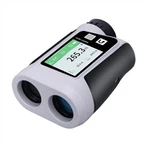Instructions for using infrared thermometer
What are the instructions for using the infrared thermometer? Can you just hold it and use it directly? Yes, the infrared thermometer is designed to be lightweight, easy to use, and can be used without training. But recently, when a user communicated with the customer service of Wuhan Yongsheng Technology, he asked a very strange question: When using a handheld infrared thermometer to measure the temperature of the oil tank, will the red infrared rays burn the oil? Our customer service replied, definitely not, the handheld infrared thermometer is a non-contact measurement, which is very safe, and the red one is not infrared, it is for aiming. It can be seen from this exchange that some users still do not know enough about infrared thermometers, so it is necessary for us to introduce some common sense of infrared thermometers here to increase users' understanding of infrared thermometers.
1. The infrared thermometer passively accepts the infrared energy radiated from the surface of the target, and then measures the temperature. The red laser aiming dot is not infrared, nor is it radioactive like X-rays;
2. The infrared thermometer can only measure the temperature of the target surface, but cannot measure the internal temperature of the target, and does not have the penetrating function;
3. When the infrared thermometer is used to measure bright or smooth metal surfaces, large measurement errors will occur;
4. The temperature measurement point of the infrared thermometer is not the point where the laser is aimed at, and it will generally be at the lower position;
5. When using an infrared thermometer for temperature measurement, the measured target should fill the field of view of the infrared thermometer;
6. In the measurement environment with dust, water vapor, smoke, etc., choose a two-color infrared thermometer for measurement;
7. The infrared thermometer does not measure as far as it wants to measure. It should be based on the size of the measured target and use the distance system ratio D:S to determine the temperature-measurable distance.






